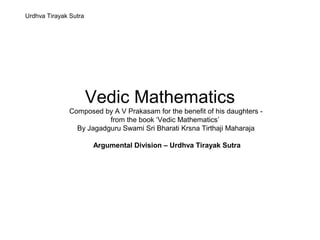The document describes the Urdhva Tiryak method of division from Vedic mathematics. It provides examples to illustrate the method. For algebraic divisions, the divisor terms are divided in descending order to obtain the quotient terms. The examples show finding the quotient and remainder when dividing polynomials using this method. In the recap, it notes this method is well-suited for algebraic expressions but more difficult for arithmetic calculations, and each of the Vedic division methods only apply to certain cases rather than providing a single general division algorithm.






